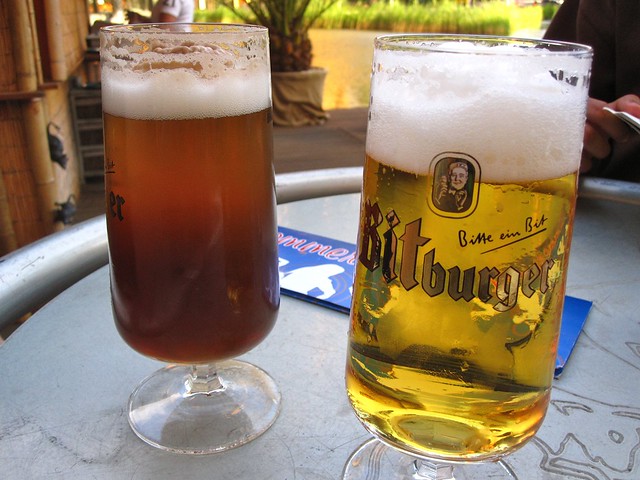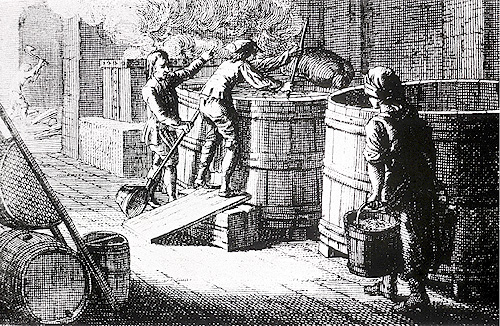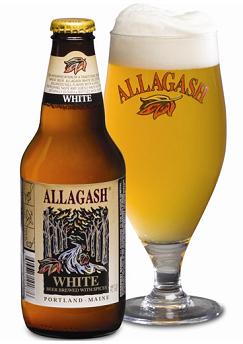This is
going to be the final installment of the beers of summer series, not because
there aren't more to dissect, but because I want to get back to writing on
other things. I think over the past month, we've looked at a healthy swath of
summer styles that you may encounter, and you've been armed with enough mind
bullets to effectively meet your summer beer challenges like a professional. So
with that, I give you the final, and perhaps weirdest, summer style of beer in
this light-hearted 5 week exposition of summer beers…
 |
| Citrus and beer... what could be more summer? |
The
Shandy
Quite
simply, a shandy is beer mixed with a soft drink, carbonated lemonade, ginger
beer, ginger ale, or apple juice. Just like the other beers of summer in this
series, the style comes from the old world – Germany – and is very popular over
there to this day. They are known in Germany as biermischgetränke, or “beer-based
mixed drinks,” and have taken on the name “shandy” in England, the U.S. and
other English-speaking countries.
The
proportion of the mixture is to taste, but is typically around 50/50. Because
you are effectively “cutting” the beer with a non-alcoholic liquid at a ratio
usually in the neighborhood of 50/50, shandies are typically low in alcohol.
Completely non-alcoholic shandies also exist and are called rock shandies.
 |
| It's a good way to get me to ride a bike |
The most
common type of shandy is the radler, which is German for cyclist and is a
reference to the beer’s reputation as a popular sports drink. Radlers consist
of a 1:1 or 3:2 ratio of various types of beer and German-style soda pop or
lemonade, which is a sparkling lemon soda like Sprite or 7-Up. In northern
Germany, the beer is typically a pilsner and the drink is called an alster
(short for alsterwasser), while in southern Germany, the beer is a weissbier
and the drink is called a russ’ (Russian). Radlers are common today in Germany,
Austria, Czech Republic, Hungary, Poland, Slovakia, Netherlands and Slovenia.
There
are other types of German shandies (or biermischgetränke) that are popular as
well. In Berlin, a very popular drink is a potsdamer, which is a 50/50 mixture
of light-colored beer and soda, with a shot of raspberry syrup. In Darmstadt, a
popular drink is the Whizz Peach, which is 50% krystallweizen and 50%
peach-flavored lemonade. There is also the Berliner Weisse mit Schuss, which is
a popular drink that consists of a light weissbier mixed with a shot of sweet
syrup. There are three kinds: Grün which is green and tastes like woodruff,
Gelb which is yellow and tastes like lemons and Rot which is red and tastes
like raspberries.
 |
| Lager plus cola... obviously... |
Another
type of shandy that is popular in Germany, Italy and Portugal is called a
diesel, and is a mixture of draft beer and Coca-Cola. These countries also
enjoy what is called a tango, which is draft beer and gooseberry cordial.
A
shandygaff is an older British name for a beer mixed with ginger beer or ginger
ale. This is where the term “shandy” comes from. The Brits also drink what they
call a Lager Top, which is basically a dash of lemonade added to a pint of
lager.
And just
like all the other beers of summer, here is my list of American versions that
you should go out and get – to make your summer that much more refreshing. Do
yourself a favor and avoid the urge to drink the Shock Top and Leinenkugel
shandies as they are big beer and big beer is bad.
Curious
Traveler Shandy – The Traveler Beer Co. – Burlington, VT: The Curious Traveler is
a shandy made with barley, wheat, hallertau hops and fresh lemons and limes. It
has an ABV of 4.4% and 7 IBUs. Traveler also makes a grapefruit version called
Illusive Traveler and a strawberry version called Time Traveler.
 |
| Quite a refresher! |
UFO Big
Squeeze Shandy – Harpoon Brewery – Boston, MA: Sweet with a hint of tartness,
UFO Big Squeeze Shandy is perfect for all of your summer adventures! The beer
pours a hazy orange color with a fine foamy head. The aroma notes are clean
citrus and wheat, and the taste is sweet with a tart grapefruit flavor.
 |
| Downright delicious! |
Saranac
Shandy – Matt Brewing Company – Utica, NY: Saranac Shandy is a refreshing blend
of lager and lemonade. It is made with barley malt, Mt. Hood hops and lemons,
and has an ABV of 4.2%.
Sam
Adams Porch Rocker – Boston Beer Company – Boston, MA: Tart & refreshing,
this unique summer quencher is our twist on the Bavarian Radler, named for
cyclists that originated this drink.
Traditionally a mixture of beer and lemonade, for our take we combined
the crispness of a golden Helles lager with a blend of lemons to create a fresh
squeezed tangy taste perfect for the long yet fleeting days of summer.
Unfortunately,
the style is still catching on here in America, so our options are still pretty
limited. The good news is, it is catching on, and with companies like Traveler
Beer Co. that exclusively make shandies, and many of your local brewers offering
shandy versions of their staples lagers and other light beers, the opportunity
to get into a delightfully refreshing shandy are all around you. And if you can
find a bottle of German lemon soda, you can make your own at home! What a time
to be alive!!!
Here’s
to craft-brewed happiness… Cheers!












